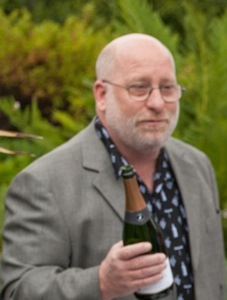John On Wine – Celebration of Mendocino County Sparkling Wines
Originally published in the Ukiah Daily Journal on February 27, 2014 by John Cesano
Destination Hopland, the non-profit group charged with promoting tourism for the Hopland area wineries, is sponsoring a new event on Saturday, April 5 and invited participation from sparkling wine producers from throughout Mendocino County. A “Celebration of Mendocino County Sparkling Wines” will be held from noon to 4 p.m. at Terra Savia, 14160 Mountain House Road, Hopland. Eleven local producers will come together at Terra Sávia winery in Hopland to showcase their finest offerings. Great and classic food pairing treats for sparkling wines will be served, like smoked salmon, local oysters, pate, canapés, fresh strawberries, artisan breads and, for dessert, delicious lavender infused sponge cake. Classical guitarist Joel DiMauro will be performing. Participating wineries include:
Graziano Family of Wines
Handley Cellars
McFadden Vineyard
Nelson Family Vineyards
Paul Dolan Vineyards
Rack & Riddle
Ray’s Station
Roederer Estate
Scharffenberger Cellars
Signal Ridge
Terra Savia
Tickets are $55 and available online at mendocinosparkling.brownpapertickets.com.
The folks at Wine Enthusiast magazine taste a lot of wine, well over 10,000 wines each year, I am sure. Last December they announced their Top 100 wines of 2013, and the #1 wine of the year was the 2004 Roederer Estate L’Ermitage. The 2014 San Francisco Chronicle Wine Competition, with 5,825 wines entered, was the largest judging of American wines in the world. The only winery in the nation to win two Double Gold Medals (unanimous Gold from the judges) for sparkling wines was McFadden Vineyard for the NV McFadden Sparkling Brut and the 2009 McFadden Reserve Sparkling Brut.
Bubbly in Mendocino County is spectacularly good, the quality high, while the prices are remarkably affordable. Far too many people open a bottle of sparkling wine only to celebrate a special event, when a good quality bubbly is an absolute delight when enjoyed as a before-dinner cocktail, or when paired with a host of foods from oysters to salmon bagels and poached eggs with caviar to chicken breasts in a citrus glaze.
Some sparkling wines that will be poured have notes of green apple and grapefruit, unapologetically crisp, while others will showcase a bready, yeasty, brioche character. Lemon, hazelnut, and toffee are notes you might taste in a sparkling wine, or rose petal and strawberry notes from a sparkling rosé.
Cuveé is a word that you will see on more than one label. Cuveé means blend, and a sparkling wine with a cuvee designation is likely a blend of Chardonnay and Pinot Noir grapes, with perhaps a small amount of Pinot Meunier.
You will also see NV on a bottle or three, and this is also a blend, but a blend of different vintages. NV means non-vintage. The folks who produce sparkling wines in Mendocino County scrupulously refer to our bubblies as sparkling wines and never Champagnes. Practically the same thing, but we respect that real Champagne comes from Champagne, France. That said, most of us understand and do not mind when our customers use the terms sparkling wine and Champagne interchangeably.
Here’s a thumbnail sketch into how sparkling wine is made: Grapes for sparkling wine are picked earlier than for still wine, at lower sugar, usually in August. Chardonnay is picked for a Blanc de Blanc, Pinot Noir is picked for a Blanc de Noir, and a blend of the two is often picked for a Brut or Brut Rosé. After crushing the grapes for juice, the wine is made in the bottle, rather than an oak barrel or stainless steel tank.
A little active yeast in the bottle feeds the sugar – this is fermentation and where the alcohol comes from. The fruit notes come from the grapes. The wine spends time with unspent yeast, and spent yeast, also known as lees and picks up some yeasty or bready notes.
By tilting the bottle toward a neck down position, and giving the bottle little turns, the yeast and lees collect at the neck end of the bottle. This process is known as racking and riddling. The neck end of the bottle is submerged in a below zero freeze bath so a solid plug of yeast and lees can be formed and removed.
A second fermentation happens when a small dose of sugar, or dosage, is added to the wine and the cork and cage are affixed to the bottle. A small amount of unspent yeast remains in the bottle and eats the dosage, resulting in carbon dioxide, the bubbles that make sparkling wines so fun. This is how good bubbly is made. I hope you’ll get a ticket to the inaugural Mendo Bubbly Fest; If you do, then I’ll definitely see you there. Cheers!



